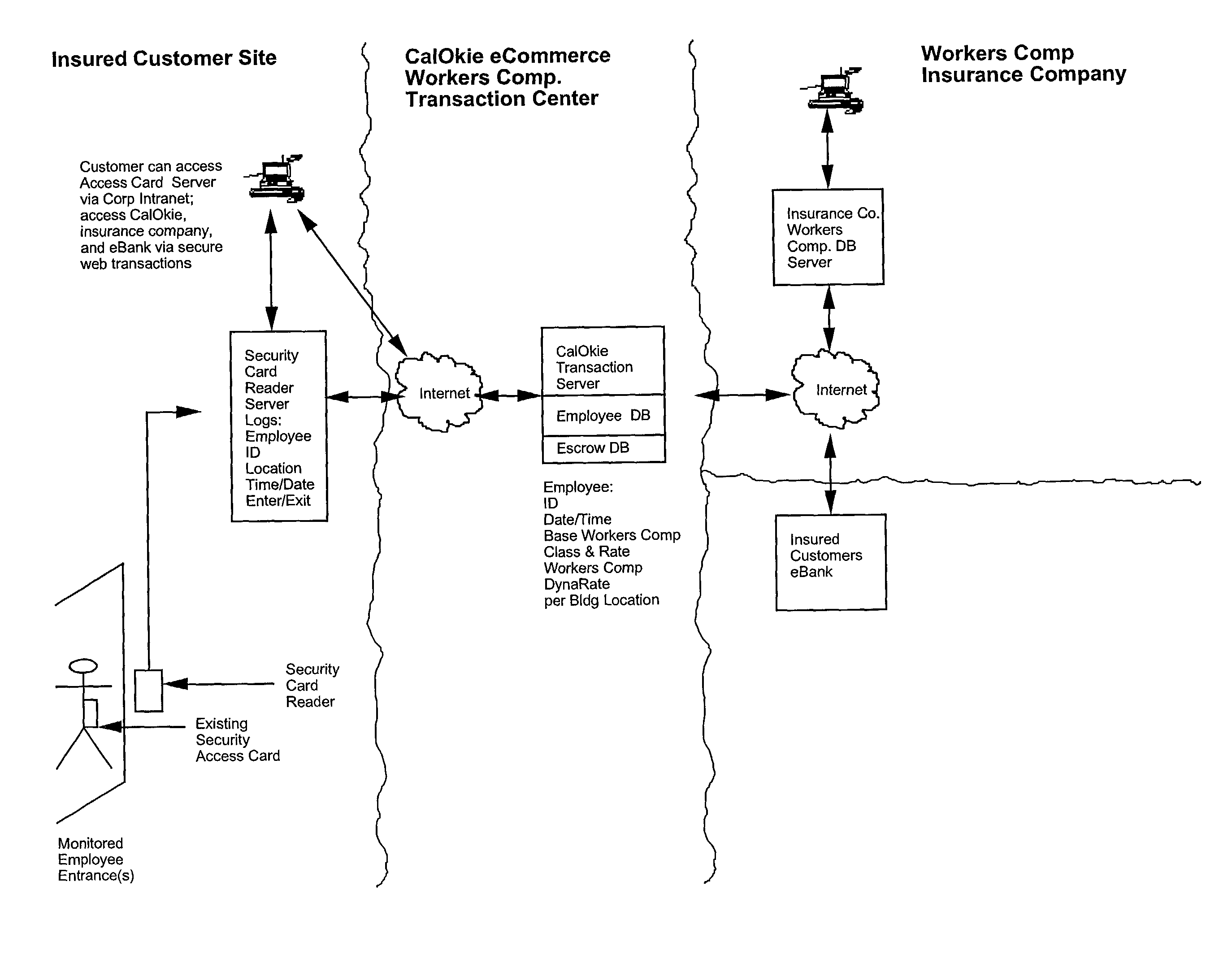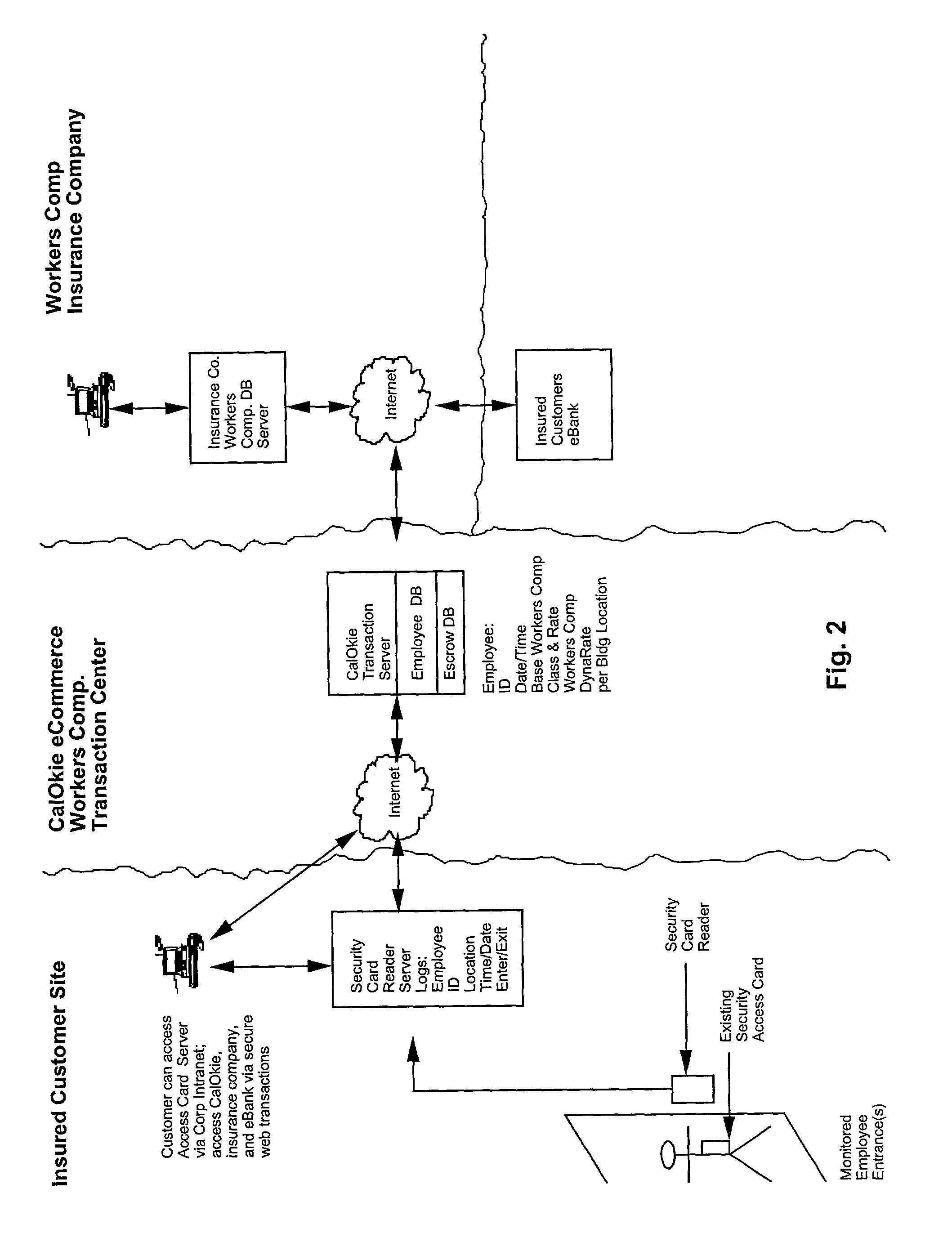System for improving logistics, tracking and billing for worker's compensation insurance
- Summary
- Abstract
- Description
- Claims
- Application Information
AI Technical Summary
Benefits of technology
Problems solved by technology
Method used
Image
Examples
Embodiment Construction
[0017]A preferred embodiment of the system is designed to work with companies with existing card reader-based security systems. Detection systems, such as for security or entry access, may already be present at companies and can be used with the present invention. This approach saves on installation costs. Alternatively, a new detection system can be installed for companies that do not already have a detection system that can be adapted for use with the invention.
[0018]Different types of detection technology can be employed. For example, magnetic, infrared, radio frequency, bar code, retinal or fingerprint scanning, face recognition, keycode or password keypads, etc., can all be used with the present invention. In general, any system that allows worker location or presence to be conveyed to an electronic system can be used with the present invention. Some types of detection systems may require employees to possess objects, such as keycards, passes, etc., for detection to occur.
[0019...
PUM
 Login to View More
Login to View More Abstract
Description
Claims
Application Information
 Login to View More
Login to View More - R&D Engineer
- R&D Manager
- IP Professional
- Industry Leading Data Capabilities
- Powerful AI technology
- Patent DNA Extraction
Browse by: Latest US Patents, China's latest patents, Technical Efficacy Thesaurus, Application Domain, Technology Topic, Popular Technical Reports.
© 2024 PatSnap. All rights reserved.Legal|Privacy policy|Modern Slavery Act Transparency Statement|Sitemap|About US| Contact US: help@patsnap.com










